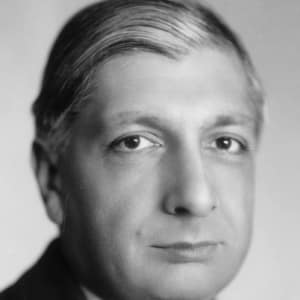
Giorgio de Chirico was born to Italian parents in Volos, Greece, on July 10, 1888. In his art, he sought to evoke the hidden meanings behind everyday life, and his enigmatic scenes of empty cities, menacing statues, mysterious shadows and strange combinations of everyday objects inspired the artists of the Surrealist movement in the 1910s. His important "metaphysical" works from these years include "The Enigma of an Autumn Afternoon," "The Soothsayer's Recompense" and "The Mystery and Melancholy of a Street." After a long career, de Chirico died in Rome, Italy, on November 19, 1978.
Giorgio de Chirico was born to Italian parents in the town of Volos, in the Thessaly region of Greece, on July 10, 1888. He first studied art at the Higher School of Fine Arts in Athens. After the death of his father in 1905, de Chirico's mother moved her three children to Munich, where de Chirico completed two years of study at the Academy of Fine Arts. After leaving the Academy he continued to educate himself, taking a particular interest in the philosophical writings of Arthur Schopenhauer and Friedrich Nietzsche. He returned to Italy in 1908, traveling to Milan and Turin and settling in Florence.
As a young artist, de Chirico was inspired by the European Symbolist artists and their use of dream-like imagery. His earliest signature works combined a Symbolist sensibility with his love of the classical antiquities of Greece and Italy and his philosophical musings on the true nature of reality. In paintings such as "Enigma of an Autumn Afternoon" (1910), de Chirico depicted dramatically lit city piazzas inhabited only by one or two figures, a statue or mysterious shadows.
In 1911, de Chirico traveled to Paris, France, where his brother, Andrea (also known as Alberto Savinio), was living. There, he exhibited his work and met a number of influential avant-garde artists and writers, including Pablo Picasso and Constantin Brancusi.
De Chirico produced many of his most important and influential paintings during his Parisian stay of 1911-15. In works like "The Soothsayer's Recompense" (1913) and "The Mystery and Melancholy of a Street" (1914), he continued to paint scenes of classical architecture and town squares punctuated by only a lone figure or monument. The mood of these paintings, with their exaggerated perspectives and empty spaces, was increasingly unsettling.
Meanwhile, World War I had begun, and de Chirico and his brother were drafted into the Italian Army in 1915. De Chirico was stationed in Ferrara, but soon afterward, he had a nervous breakdown and spent time in a military hospital. In 1917, he met artist Carlo Carrà, who worked with him to define his style of "metaphysical painting," emphasizing the hidden significance of ordinary places and objects.
De Chirico's "metaphysical" works, including "Love Song" (1914), "The Seer" (1915) and "The Disquieting Muses" (1917), featured illogical combinations of everyday objects such as rubber gloves, fruit and maps, and were peopled by faceless mannequins. By this time, de Chirico's work was greatly admired by the newly formed Surrealist school of artists and writers, who were fascinated by dream analysis and the subconscious mind.
Though de Chirico did not identify himself as a Surrealist, he briefly collaborated with the artists of this circle, showing his work in their group exhibitions in Paris and illustrating books by Guillaume Apollinaire and Jean Cocteau. However, in the 1920s, he began working in a neo-traditional style inspired by Renaissance "old masters" like Raphael and Titian, and he turned against modern art and broke ties with the Surrealists.
De Chirico's later career was inconsistent and occasionally controversial. He worked in a variety of formats from theater design to book illustration to sculpture, but his style was subject to unpredictable changes. His reputation was damaged when falsely dated copies of his works, by both de Chirico himself and forgers, infiltrated the art market.
De Chirico died on November 19, 1978, in Rome, Italy. He had been married twice, first to Raissa Gurievich and then to Isabella Pakszwer Far. After his death, de Chirico was recognized and praised for his influence on both the Surrealists and a later generation of artists, photographers and filmmakers.